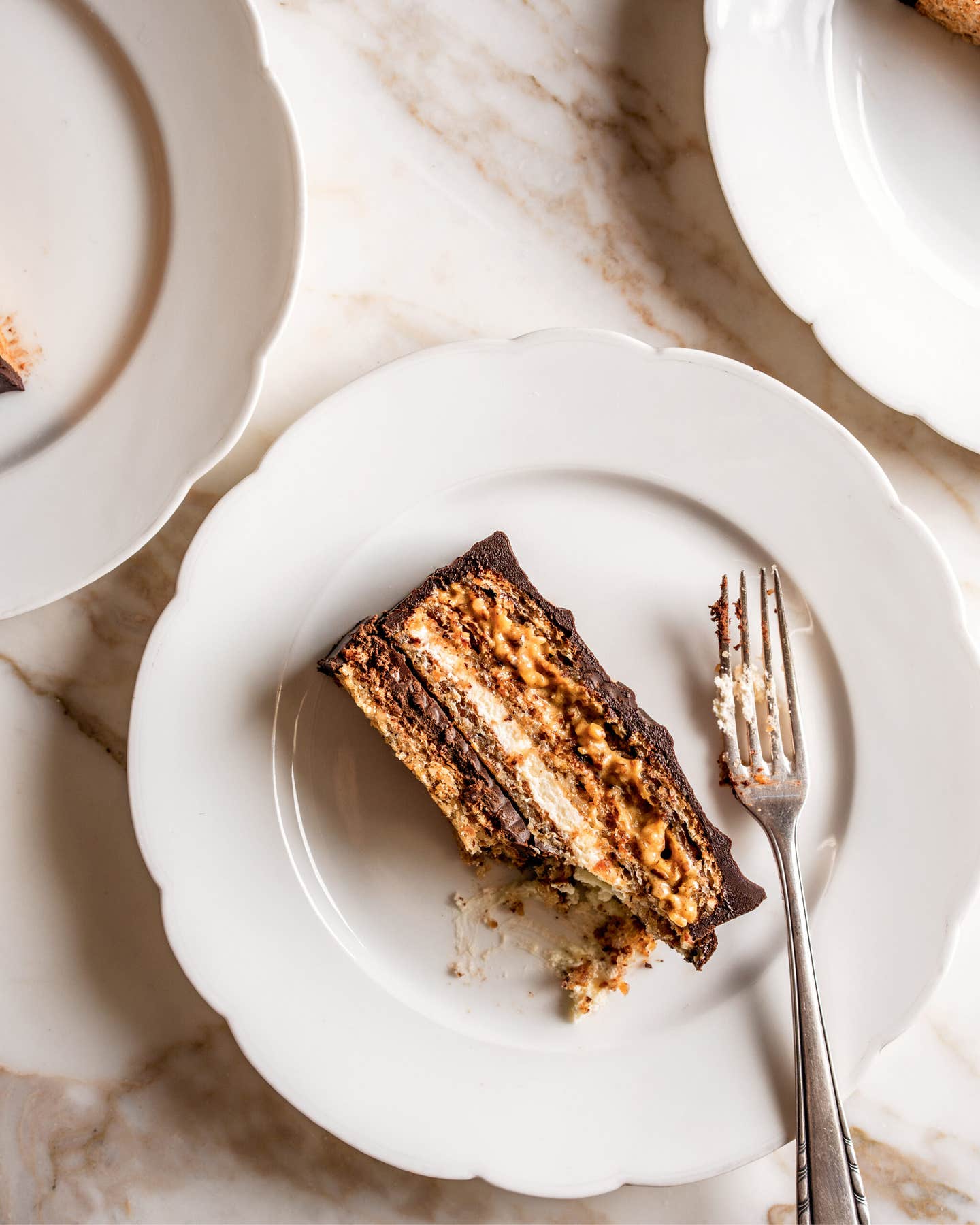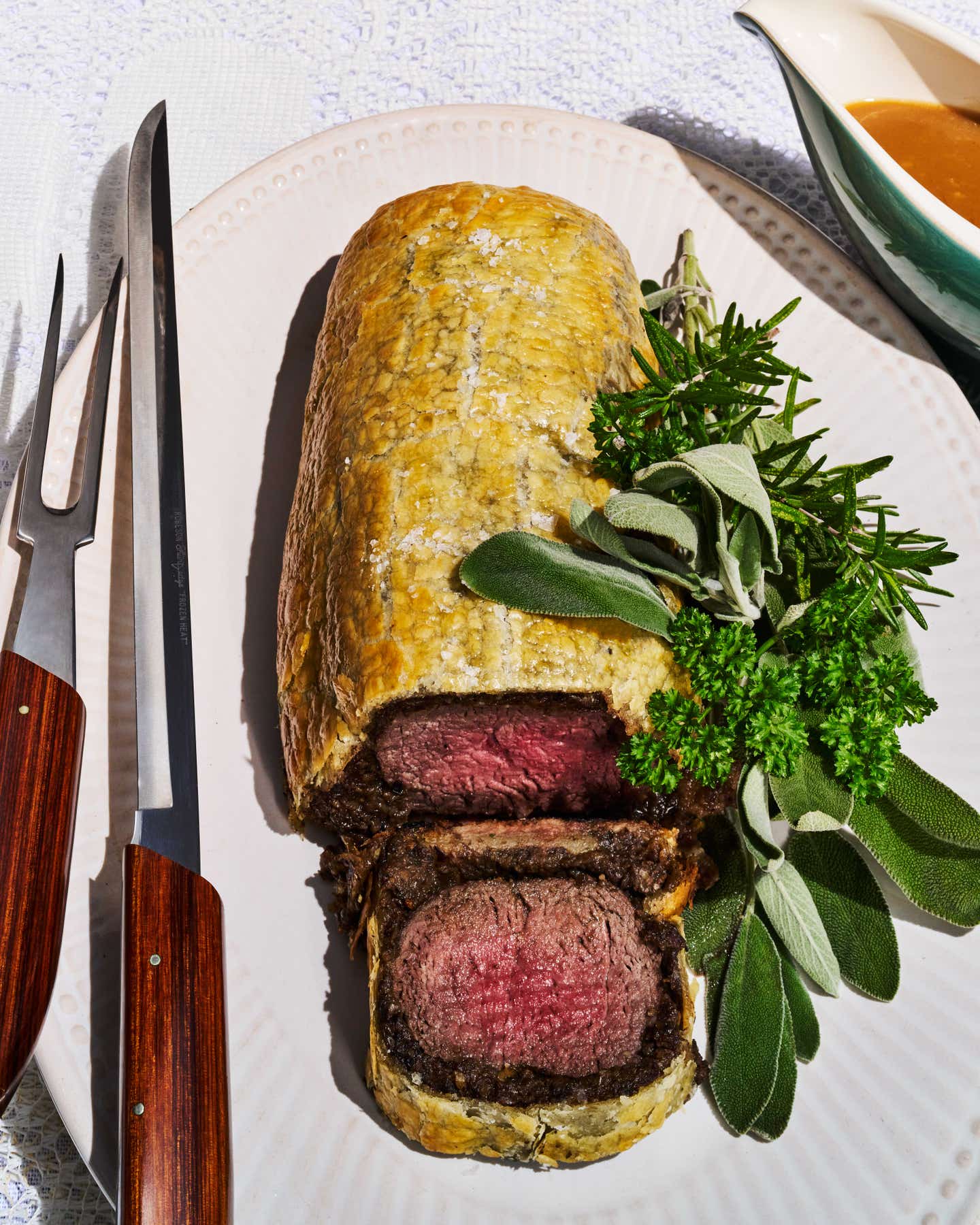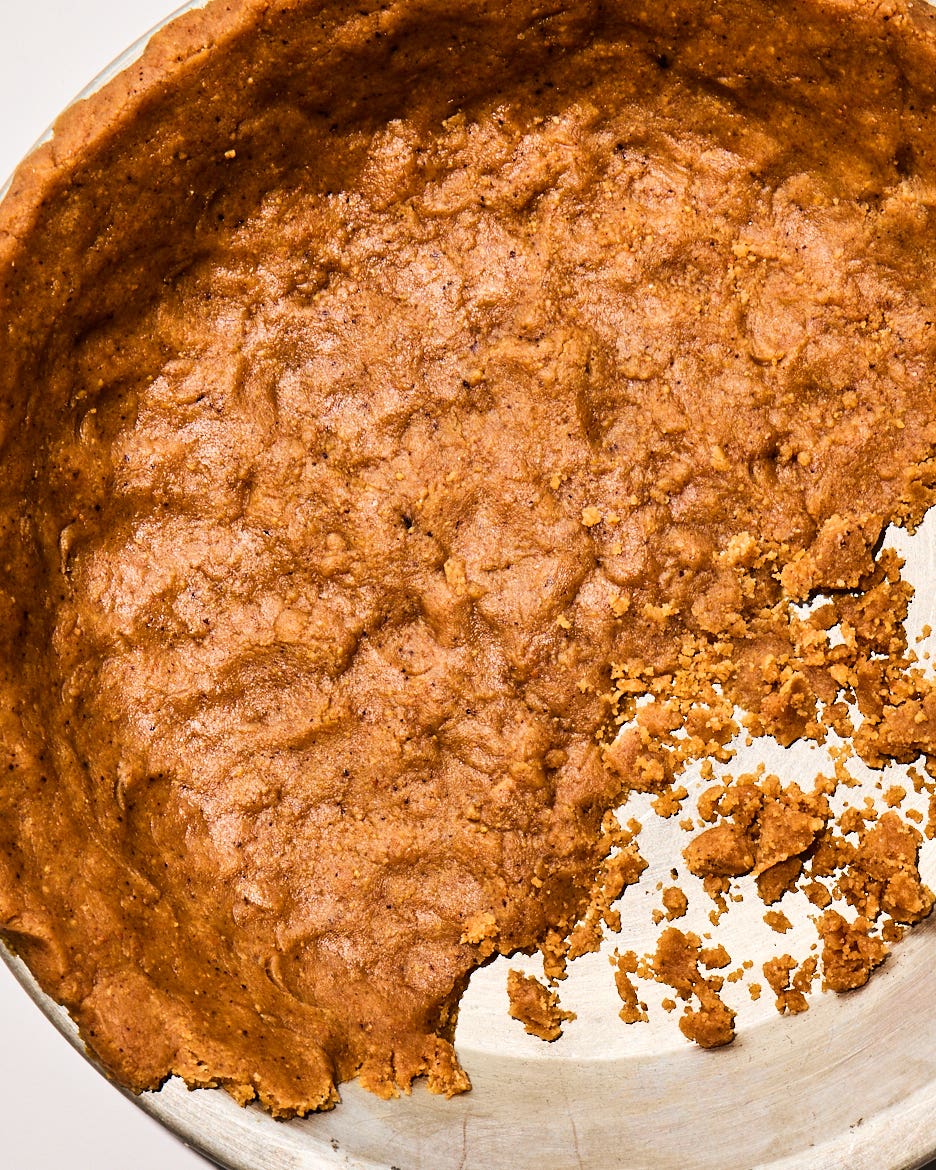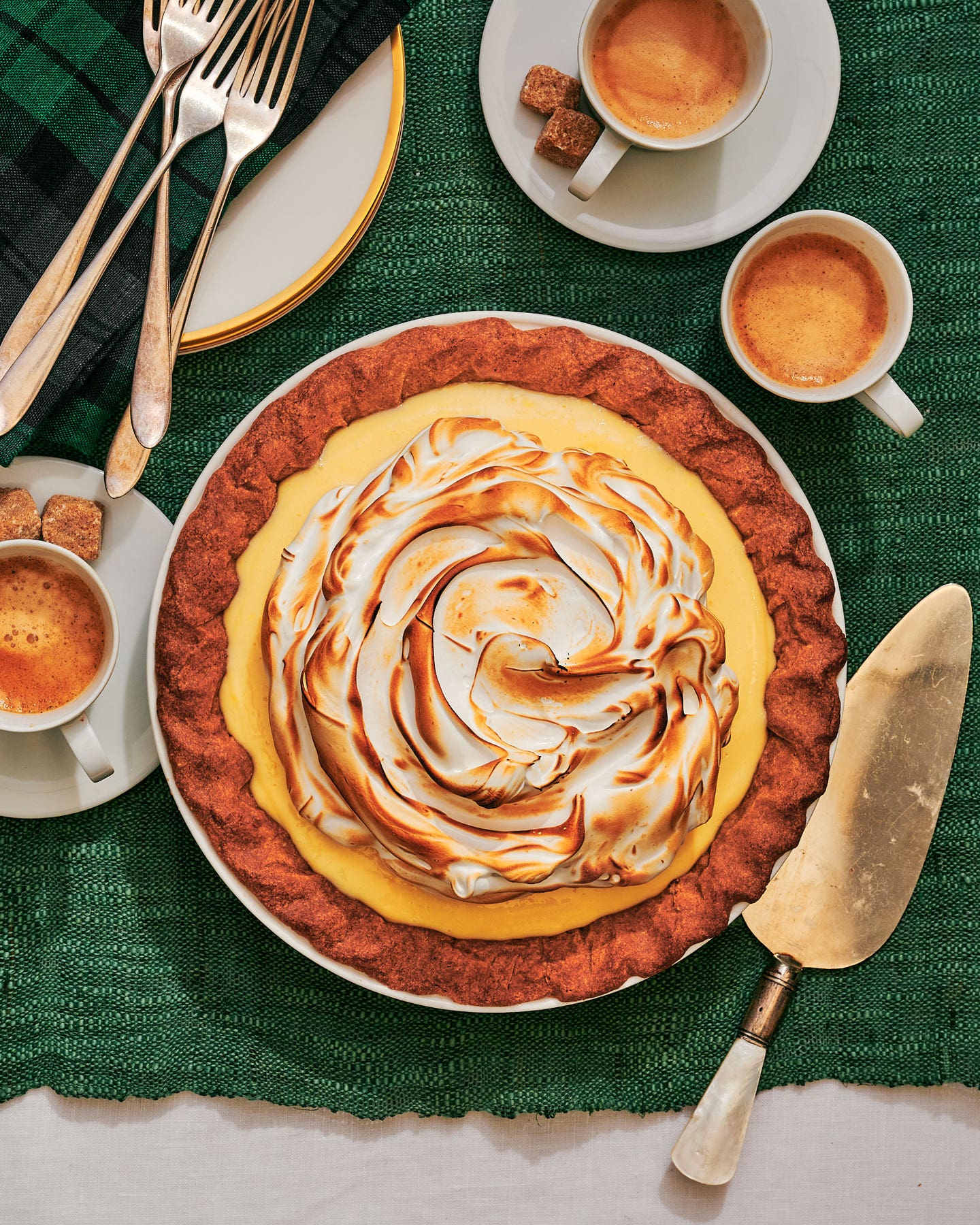Bastani Sonnati Ice Cream Sandwiches
Floral, delicate saffron perfumes both the ice cream and the cookies in these Persian-inspired frozen treats.
- Serves
Makes 20 sandwiches
- Time
18 hours
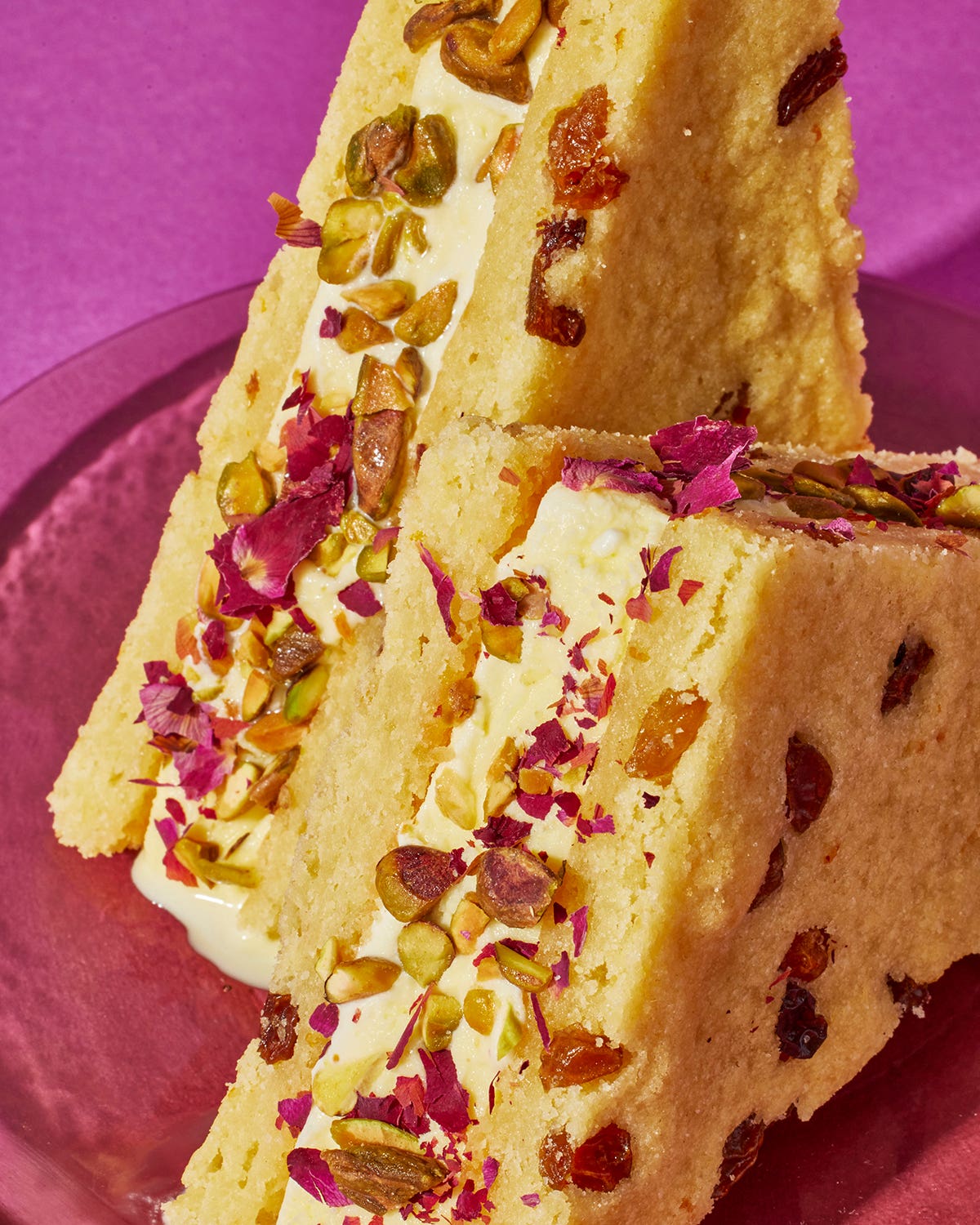
At Eyval in Brooklyn, chef Ali Saboor’s artful hand and Persian influence extend beyond the savories and onto the dessert menu—most notably with this elegant bastani sonnati ice cream sandwich. Perfumed with saffron, rosewater, and citrus and studded with raisins, the shortening-based cookies stay soft when frozen. They’re paired with Saboor’s bastani sonnati, a traditional Persian ice cream made with saffron and rosewater and typically served plain or sandwiched between two wafers. Saboor recommends seeking out rosewater from the brands Sham’s or Sadaf.
If you want to give your frozen treats an extra flourish, Saboor suggests finishing them with a pistachio-rose sprinkle. The colorful mix is lovely pressed into the edges of these ice cream sandwiches or even sprinkled over a sundae: In a small bowl, toss ¼ cup coarsely chopped roasted pistachios with ⅓ cup dried rose petals. Transfer to an airtight jar and store in a cool place for up to 3 months.
Featured in “6 Bold Ice Cream Sandwich Recipes to Change Things Up This Summer” by Kat Craddock.
Ingredients
For the ice cream:
- 1⅓ cups heavy cream
- 1⅓ cups whole milk
- Pinch saffron threads, ground to a powder
- ⅔ cup sugar
- 6 large egg yolks
- ¼ cup rosewater
For the cookies:
- Pinch saffron threads, ground to a powder
- 1¼ cups sugar
- ¾ cup plus 2 Tbsp. shortening
- 1 tsp. finely grated orange zest
- 2 large eggs
- 1¼ cups all-purpose flour, sifted
- Nonstick baking spray
- ¼ cup golden raisins
Instructions
Step 1
Step 2
Step 3
Step 4
Step 5
Step 6
Step 7
Step 8
Step 9
- Make the ice cream: Fill a large bowl halfway with ice water and place a smaller bowl inside it. To a medium pot set over medium-low heat, add the cream, milk, and saffron. In a medium bowl, whisk together the sugar and egg yolks. When the cream-milk mixture is warm, whisk about a third of it into the yolk mixture until the sugar is dissolved and the liquid is smooth, then whisk the yolk mixture back into the pot. Cook the custard, using a silicone spatula to scrape the bottom of the pot continuously, until thickened and a digital thermometer reads 175–180°F, about 3 minutes. (Don’t walk away from the stove, stop stirring, or let the mixture boil, or the custard may curdle.) Remove from the heat, then transfer the custard to the ice bath; cool, stirring occasionally, until cold to the touch.
- Stir the rosewater into the custard, remove it from the ice bath, then cover tightly and refrigerate for at least 12 hours, or up to 24. (Don’t skip this step, as churning immediately may cause the cream to separate.)
- Meanwhile, make the cookies: In a small bowl, place an ice cube and sprinkle over the saffron; set aside until the ice has melted (this creates a saffron “cold brew”). Using a stand mixer fitted with the paddle attachment, mix the sugar, shortening, and orange zest on low, scraping down the bottom and sides of the bowl occasionally, until just combined. Add the eggs and 1¼ teaspoons of the saffron concentrate (reserve any remainder for another use) and continue mixing on low speed, scraping down the bowl as needed, until incorporated. Add the flour and continue mixing until just combined.
- Grease an 18- by 13-inch rimmed baking sheet with nonstick spray, line with parchment paper, then lightly grease the paper. Scrape the cookie batter onto the sheet and, using an offset spatula, spread into an even layer. Refrigerate until firm, about 30 minutes.
- Position a rack in the center of the oven and preheat to 350°F. Sprinkle the raisins evenly over the batter, pushing down gently with your fingers to settle them into the dough. Bake until the edges are slightly browned but the cookie is still soft in the center, 18–20 minutes. Set aside to cool to room temperature.
- Meanwhile, line a 9- by 13-inch rimmed baking sheet with parchment, allowing the paper to overhang the two long sides of the pan. Transfer the sheet to the freezer.
- Transfer the custard to an ice cream machine and churn according to the manufacturer’s instructions until thick, frozen, and no longer wet in appearance, about 25 minutes. Retrieve the chilled baking sheet and, using a silicone spatula, scrape the ice cream onto it, smoothing the surface into an even layer. Freeze until solid, 4–6 hours.
- Build the ice cream sandwiches: Carefully transfer the baked cookie to a large cutting board and, using a large knife, trim any dry or crumbly bits from the edges, then cut the sheet in half crosswise. Gently flip one half over, raisin-side-down. With the ice cream still on the baking sheet, use the parchment paper to lift it out of the baking sheet, then invert it atop the upside-down cookie. Peel off and discard the parchment and place the other cookie half, raisin-side-up, over the ice cream, pressing down gently to adhere. Transfer the ice cream sandwich slab back to the 9- by 13-inch baking sheet and return to the freezer until very firm, at least 30 minutes.
- Transfer the slab back to the cutting board. Using the large knife, cut into 10 approximately 3-inch squares. Halve each square diagonally to make triangles. Transfer the ice cream sandwiches back to the rimmed baking sheet and freeze until the sandwiches are very firm, at least 1 hour. Serve straight from the freezer. (The sandwiches will keep for 2 weeks; if serving more than 4 hours later, wrap the tray tightly with plastic wrap.)
Keep Reading
Continue to Next Story
